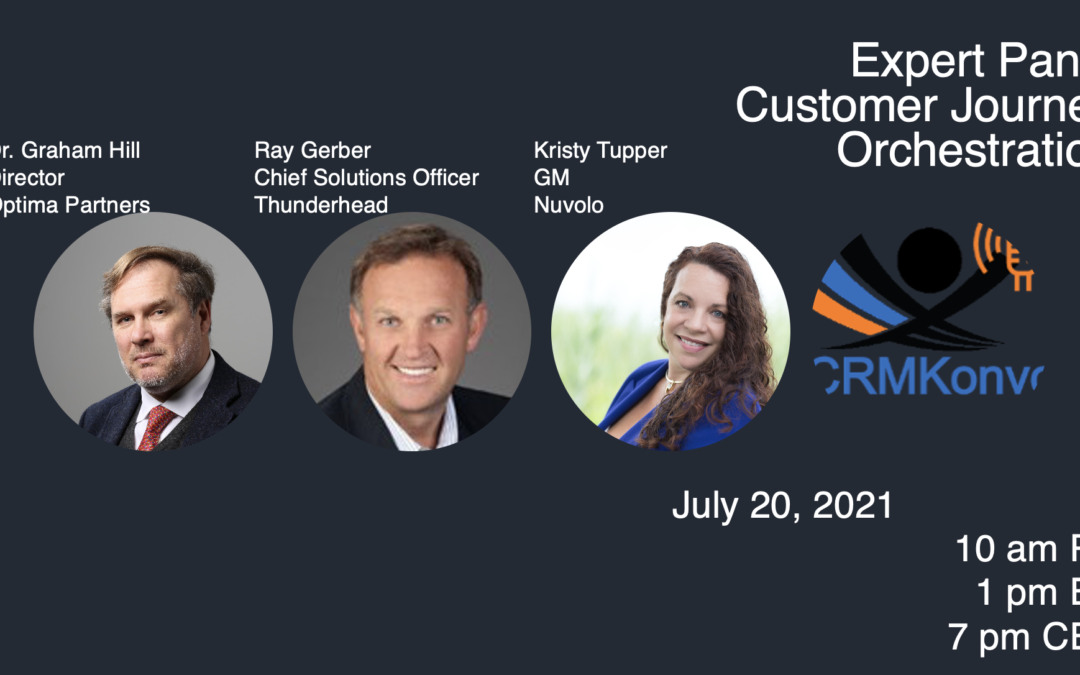
by twieberneit | Sep 9, 2021 | Blog, Sponsored |
Customer journeys are as individual as customers. Every customer has different needs, preferences, knowledge, information and another way to resolve their issues. In brief, every customer has a context of their own. As a consequence, customer journeys are often non-linear and move across different channels and devices. In between the online steps there might very well be some offline steps. Customer journeys are usually emerging sequences of interactions or engagements between the customer and the business towards a goal. This goal needs to be the customer’s goal, albeit in the limitations of a business environment. Customer journeys can, in fact, be compared to conversations, which are also not linear. With this thinking, it is only a small step to the thought that customers do manage and orchestrate their journeys individually and for themselves. Consequently, there is no need to design their journeys for them. It can even be counterproductive. A better approach is to provide customers with a channel independent menu of interconnected contact points that helps them to achieve their objective, their way. With the company offering – potentially different – contact points to different customers, both parties’ needs are mostly fulfilled; the business need for efficiency, the customers need to build and follow their own journeys, and both parties’ need for effectiveness. This raises the question about why we should be interested in these interconnected contact points. The answer is quite simple. What is the objective? Companies that are working towards supporting their customers’ needs and desires have an edge over their competitors. They have more success acquiring and retaining customers, even turning them into loyal advocates....

by twieberneit | Jul 30, 2021 | Blog, CRMKonvos |
Following the great discussion about Customer Journey Orchestration that we had with Graham Hill it was obvious that this topic deserves and requires more attention. We had a lot of points and different terms, starting from customer journey management, customer managed journeys, customer journey analytics, customer journey mapping and so on. Provocative statements like “customer journey mapping is utterly useless” popped up and were discussed. Is this tool utterly useless? Well, the discussion shed some light! So, we asked the most active participants of the chat conversation whether they would be up for a panel discussion. Graham Hill, Ray Gerber and Kristy Tupper agreed. So, here we are with a panel discussion about this exciting topic. The three of them have different views that help in furthering our knowledge. The CRMKonvos team is really excited to host this discussion, which is cut in three sections. Interested in the leading questions? Have a look at the next three short videos. Or dive right into the discussion, which is at the end of this post. What is customer journey orchestration? Who benefits most of Customer Journey Orchestration? How do customer journey orchestration and customer journey mapping relate to each other? These good questions and points of view opened up exciting and well received discussions. Enjoy watching...

by twieberneit | Apr 30, 2021 | Blog, CRMKonvos |
Customer Journey Orchestration is one of the hottest topics in the CRM/CEM/CX area right now. And it is a bigger one than you might think. It involves thinking about ecosystems, actors, outcomes, interactions, jobs-to-be-done and much more. To get into the thick of it, we wanted to talk with someone who really knows this topic from the inside out, and is independent at the same time. This person is Dr. Graham Hill, who has advised numerous companies across the globe for over 30 years now. As said, Graham knows his stuff and is a recognized thought leader in customer experience, interaction optimization and journey orchestration. So, let us hear what he has to say! Spoiler alert: You will not regret it! Join us in the discussion with Dr. Graham Hill, who has a keen eye on this topic from a services dominant logic point of view. Attend, participate, engage. You will not regret it....

by twieberneit | Apr 13, 2021 | Blog |
It is time to talk about customer journeys and customer journey orchestration. Again. The theme of two of my recent articles has been about customer data. First, in my article Why you don’t want a 360-degree on the customer I rubbed the coveted 360-degree view on the customer, which is utterly meaningless as a contextually relevant view on the customer is required to take any decision or action. Then I followed up with the view that a customer data platform (CDP) is not an end in itself but a means to an end. Actually, two ends. They are engagement and experience. Back in the day when no one talked about CDPs I wrote in a guest post There is no customer experience without customer engagement to Paul Greenberg’s ZDNet column that a well-orchestrated CRM system sets the foundation “for every meaningful and relevant engagement, proactive (company initiated) as well as reactive (customer initiated), which covers all communication/engagement channels, and an increasing number of possible touch points. The CRM system, at its core, is channel- and touch point agnostic. But it supports and serves all of them, every single one – including those that we do not yet know of. The customer engagement, as an ongoing process, itself happens via any number of interactions, the touch points chosen by the customer, but offered by the company”. This is, of course, based on Paul’s definition that “customer engagement is the ongoing interaction between company and customer, offered by the company and chosen by the customer”. Nowadays one could replace the term CRM with CDP, but how we call it doesn’t really...





